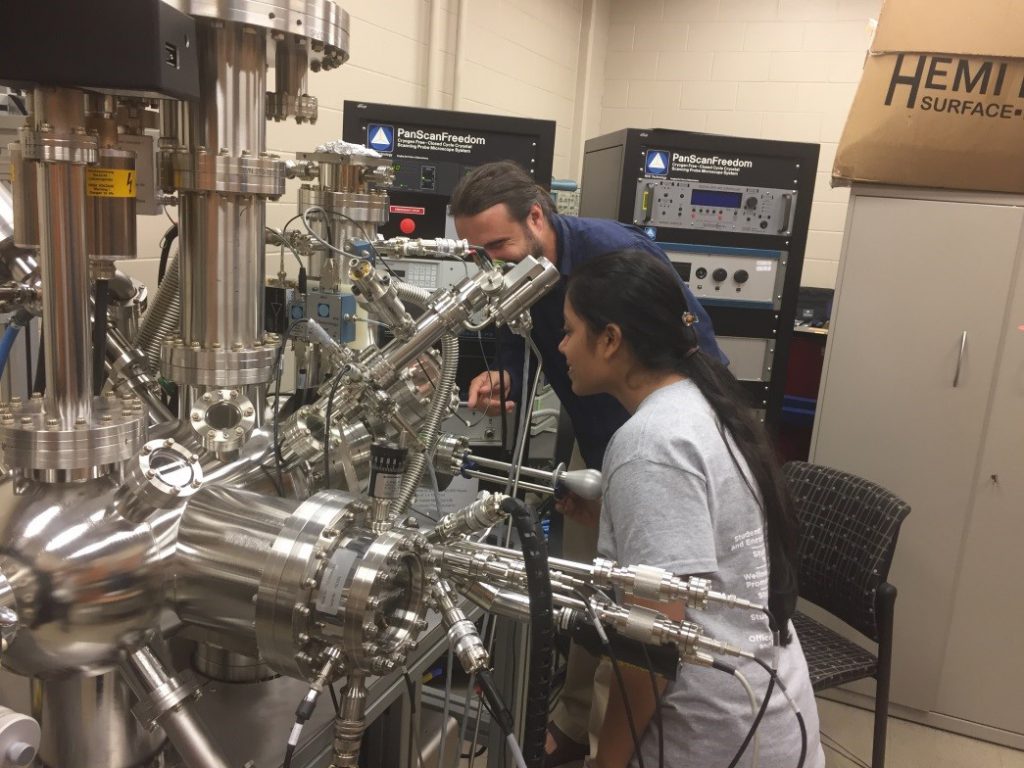The technique used to detect the satellite could help identify more objects, which could potentially help broaden our understanding of our solar system.
BY ZENAIDA GONZALEZ KOTALA | DECEMBER 11, 2019 https://www.ucf.edu/news/ucf-postdoctoral-researcher-detects-hunts-of-satellite-orbiting-dwarf-planet/
A University of Central Florida postdoctoral scholar has detected hints of a satellite orbiting an object beyond Neptune.
Estela Fernandez-Valenzuela, a postdoctoral research associate at UCF’s Florida Space Institute, was the lead author on the paper about the detection, which recently published in The Astrophysical Journal.

“It is the first time that the existence of a satellite has been suggested using analysis of rotational light-curves techniques,” Fernandez Valenzuela said. “It’s quite exciting.”
Beyond the eight planets in the solar system, scientists study a multitude of other types of celestial bodies. They are called different things based on the parameters that define the orbits they travel around the sun. The objects, not to be confused with asteroids and comets, litter the solar system. About 2,500 trans-Neptunian objects have been discovered and it was one of these objects – Varuna – that Fernández-Valenzuela was studying when she detected a potential satellite.
She collaborated with a team of scientists in Spain, where she worked before joining UCF in 2019. The team collected 19 years of data about Varuna from the Sierra Nevada Observatory in Granada, Calar Alto Observatory in Almería, and Roque de los Muchachos Observatory in the Canary Islands, all in Spain. The team analyzed the data, looking at how the rotational light curves (the brightness variation of the object due to the rotation on its main-inertial axis) of this TNO differed from what was expected from a single object. They found that beside the periodicity due to the rotation of the body, there was a second periodicity indicating there was likely a satellite orbiting Varuna every 11.9 hours. Until now, satellite discoveries in the trans-Neptunian region have been only accomplished using direct imaging, according to the study.
“Up to date, satellites in the trans-Neptunian region have only been detected using direct imaging, which means there may be many satellites we are not able to differentiate from the main body as they are very close to each other,” she said. “Adding this technique, which has been used for asteroids (much closer than TNOs, and therefore much brighter) should help us detect more satellites that are too close to its host, which should in turn improve our theoretical understanding about the formation of systems with satellites and also about the different physical processes that take place in the outer solar system.”
Co-authors of the paper are: Jose Luis Ortiz, Nicolás Morales, Pablo Santos-Sanz and René Duffard from the Instituto de Astrofísica de Andalucía, Spain; Amadeo Aznar from Observatorio Isaac Aznar, Grupo de Observatorios APT, Spain; Noemi Piniall-Alonso from the University of Central Florida; Vania Lorenzi with affiliations at Fundación Galileo Galilei—Istituto Nazionale di Astrofisica, and Instituto de Astrofísica de Canarias, Spain, and Emmanual Lellouch LESIA, Observatoire de Paris, Université PSL, CNRS, University. Paris Diderot, Sorbonne Paris.
Fernández-Valenzuela has bachelor’s and master’s degrees from the University of Madrid and a doctorate in physics and space science from the University of Granada. Her research focuses on the trans-Neptunian objects orbiting in the outer part of the solar system. She is an expert in photometric techniques to analyze the light curves of these objects. Fernández-Valenzuela is also involved in ground-based observations in support of NASA’s Lucy mission, which is expected to launch in October 2021 and travel to the Trojan asteroids for close-up study. Lucy will fly by six Jupiter Trojans (a large group of asteroids that share Jupiter’s orbit around the Sun) and one main-belt asteroid. It will be the first mission to visit these primitive bodies of the solar system. Fernández-Valenzuela is also using NASA’s Spitzer Space Telescope data at the California Institute of Technology to study the surface composition of TNOs.


